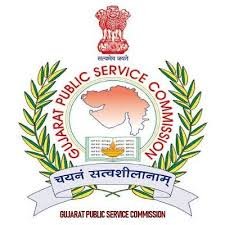Tracking recruitment metrics is essential for optimizing your hiring process and improving overall recruitment strategies. Metrics provide insights into how effectively your recruitment efforts are performing, allowing you to make data-driven decisions. In this blog, we explore crucial recruitment metrics, why they matter, and how you can use them to enhance your hiring process.
Recruitment Metrics: Key Metrics to Track
1. Time-to-Fill
Time-to-fill measures the number of days from when a job opening is posted to when a candidate accepts the offer. This metric helps you understand how efficiently your recruitment process works. A shorter time-to-fill generally indicates a smoother and more effective recruitment process.
To reduce time-to-fill, streamline your recruitment process by improving job descriptions, utilizing recruitment software, and enhancing candidate communication. Efficiently managing this metric helps ensure you don’t lose top talent to faster-moving competitors.
2. Cost-per-Hire
Cost-per-hire calculates the total cost associated with hiring a new employee, including advertising, recruitment agency fees, and internal HR costs. Tracking this metric helps you understand the financial impact of your recruitment efforts and identify areas where you can optimize spending.
By analyzing cost-per-hire, you can determine which recruitment channels provide the best return on investment. Focus on cost-effective channels and negotiate better rates with recruitment agencies to manage expenses effectively.
3. Quality of Hire
Quality of hire assesses the performance and fit of new hires within your organization. This metric is often measured through performance reviews, retention rates, and employee feedback. High-quality hires contribute positively to your organization’s success and culture.
To improve quality of hire, refine your recruitment process by enhancing job descriptions, using assessment tools, and involving hiring managers in the selection process. Evaluating this metric helps you attract candidates who align with your organization’s goals and values.
4. Source of Hire
Source of hire tracks where your successful candidates come from, such as job boards, social media, or employee referrals. Understanding which sources yield the best candidates helps you allocate resources more effectively.
Focus on high-performing sources by analyzing recruitment data and investing more in channels that produce quality hires. Adjust your sourcing strategy based on this metric to enhance your recruitment efforts.
5. Candidate Experience
Candidate experience measures how applicants perceive your recruitment process, including the application, interview, and onboarding stages. Positive candidate experiences can enhance your employer brand and attract top talent.
Gather feedback from candidates through surveys and reviews to assess their experience. Use this information to make improvements to your recruitment process, ensuring a smoother and more positive experience for all applicants.
6. Offer Acceptance Rate
Offer acceptance rate calculates the percentage of job offers accepted by candidates compared to the total number of offers extended. A high offer acceptance rate indicates that your offers are competitive and appealing to candidates.
If you notice a low acceptance rate, assess your offer packages, including salary, benefits, and company culture. Improve your offers based on candidate feedback to increase the likelihood of acceptance.
7. Applicant-to-Hire Ratio
The applicant-to-hire ratio measures the number of applicants who apply for a position compared to the number of hires made. This metric helps you understand the effectiveness of your job postings and recruitment channels.
A high applicant-to-hire ratio may indicate that your job descriptions are attracting too many unqualified candidates. Refine your job postings and targeting strategies to attract candidates who closely match your requirements.
Why Recruitment Metrics Matter
Recruitment metrics provide valuable insights into your hiring process, helping you identify strengths and areas for improvement. By tracking these metrics, you can make data-driven decisions to enhance your recruitment strategies, reduce costs, and improve the overall candidate experience.
Implementing effective recruitment metrics allows you to:
- Optimize Recruitment Strategies: Data-driven insights help you refine your recruitment approach, ensuring that you invest in the most effective channels and methods.
- Reduce Costs: Understanding cost-per-hire and other financial metrics helps you manage recruitment expenses more efficiently.
- Improve Quality of Hire: Evaluating the performance of new hires helps you attract and retain top talent that aligns with your organization’s goals.
- Enhance Candidate Experience: Tracking candidate feedback and experience metrics allows you to create a more positive and engaging recruitment process.
Conclusion
Tracking recruitment metrics is essential for optimizing your hiring process and making informed decisions. By focusing on key metrics such as time-to-fill, cost-per-hire, quality of hire, source of hire, candidate experience, offer acceptance rate, and applicant-to-hire ratio, you can enhance your recruitment strategies and improve overall hiring outcomes.





